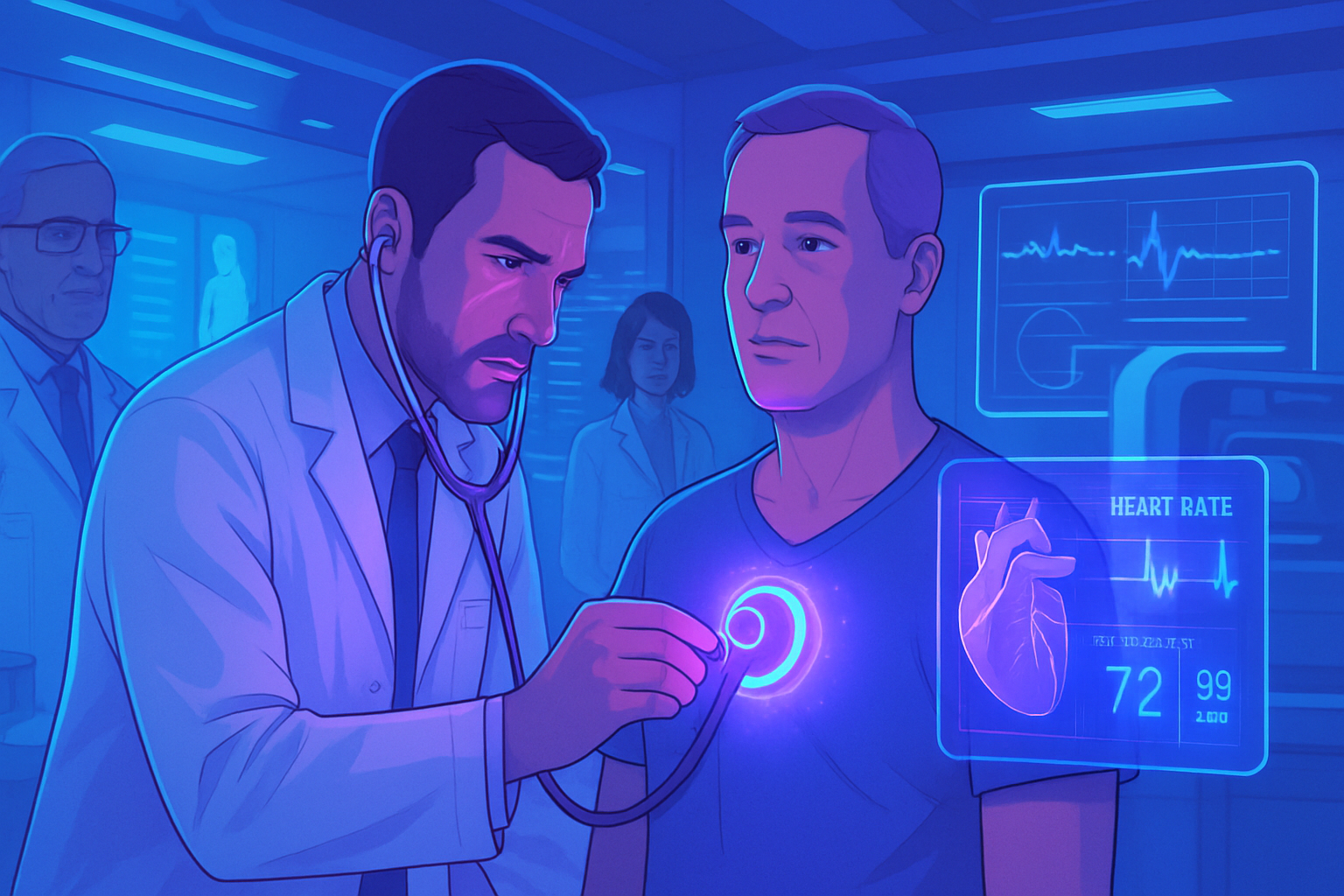The artificial intelligence is radically transforming the paradigms of meteorological and climatic forecasting. This technological evolution allows for the improvement of the accuracy of local forecasts and the more efficient management of extreme events. Significant challenges lie behind this advancement: anticipating the consequences of environmental changes and protecting vulnerable populations. AI emerges as an indispensable tool in this quest for knowledge, making it possible to conduct unparalleled climate simulations and offering innovative support to early warning systems. This major turning point reshuffles not only traditional techniques but also promises a better understanding of complex atmospheric dynamics.
The impact of artificial intelligence on meteorological forecasting
The emergence of artificial intelligence (AI) heralds a revolution in meteorological forecasting. Thanks to advanced algorithms, forecasts are now made with unprecedented speed and accuracy. AI systems analyze vast amounts of meteorological data in seconds, surpassing human and traditional capabilities.
AI-powered predictive models allow for the anticipation of various phenomena, such as storms or heatwaves. In 2024, the use of these technologies has already enabled organizations like Météo France to conduct climate simulations on a local scale. These simulations focus particularly on the impacts of climate change and thus offer a more precise view of fluctuations at the community level.
Improvement of early warning systems
Technological advancements also lead to a refinement of early warning systems. By integrating AI into these systems, it becomes possible to issue alerts for extreme weather phenomena, such as hurricanes or floods. Thanks to more reliable predictive analyses, it is now possible to mitigate the disastrous consequences that these events can bring.
For example, AI not only allows for forecasting the magnitude of an event, but it also helps to optimize crisis management. The integration of real-time data, combined with sophisticated algorithmic models, becomes essential for the safety of populations.
Collaborations between AI and satellites
AI has partnered with satellites to deepen our understanding of the climate. Satellites provide valuable data on various atmospheric parameters. AI, through its analysis capabilities, extracts relevant information, promoting increased observability of global and local climate changes.
The joint efforts of organizations such as ECMWF and private companies, including tech giants, herald the development of new AI-based analysis tools. This opens up prospects for better forecasting, both short and long term.
A turning point in research and innovation
The years 2022-2023 marked a significant turning point in the application of AI to meteorology. Numerous scientific publications detail the concrete applications of AI in this field. Research areas are diversifying, allowing for the development of more refined and diverse predictive models, adapted to various geographical scales.
This innovative approach also questions how AI can revolutionize the sector by providing solutions to contemporary climate challenges. For instance, the statistical techniques brought by AI provide real-time simulations that prove to be major assets for meteorologists.
The challenges and future perspectives
Despite the exciting promise of AI, ethical and security issues must be considered. The massive collection of personal weather-related data raises questions about privacy and the use of this information. It is essential to regulate this rapidly expanding field to protect users while enabling innovation.
Furthermore, the current dynamic in the face of climate change requires continued attention. Collaborative research between public and private institutes proves essential for deepening the understanding of climate phenomena. These joint efforts will contribute to creating appropriate tools for better forecasting the future. The balance between innovation and data protection will be crucial in the adoption of AI in meteorological forecasting.
Frequently asked questions about artificial intelligence and meteorological forecasting
How does artificial intelligence improve the accuracy of meteorological forecasts?
Artificial intelligence uses advanced algorithms to analyze vast sets of climate data, which allows for identifying patterns and improving the accuracy of forecasts at the local level.
What types of data does AI use for climate forecasting?
Artificial intelligence relies on data from satellites, weather stations, and numerical models, thus combining historical and real-time information for more accurate predictions.
What are the advantages of AI-supported early warning systems?
Early warning systems equipped with AI allow for faster detection of extreme weather phenomena, such as storms or heatwaves, which can help minimize impacts on communities.
Does the use of artificial intelligence in meteorology present risks?
Yes, there are concerns regarding excessive dependence on automation, as well as data quality. Errors in configuring AI models can also lead to incorrect forecasts.
What recent innovations in AI are influencing climate forecasting?
Technologies like deep learning models, such as those developed by Google with GraphCast, are transforming how meteorological forecasts are generated, offering faster and more accurate results.
How does climate change impact AI-based meteorological forecasts?
Climate change modifies traditional climate patterns, making forecasts more challenging. AI helps model these changes to better understand and predict future impacts.
What are the implications of AI for future meteorological research?
Artificial intelligence opens new avenues for research by enabling high-resolution simulations and facilitating the analysis of large datasets, which could lead to significant advancements in the field.
How does artificial intelligence help with local-scale climate forecasting?
Through precise modeling and analyses of microclimates, AI allows for detailed insights into local weather conditions, making forecasts more relevant for the affected populations.






